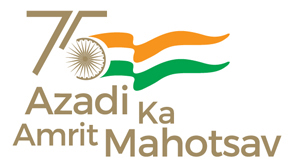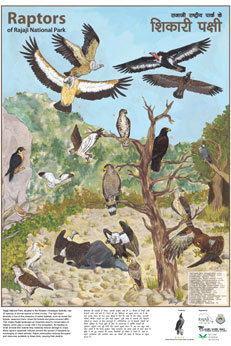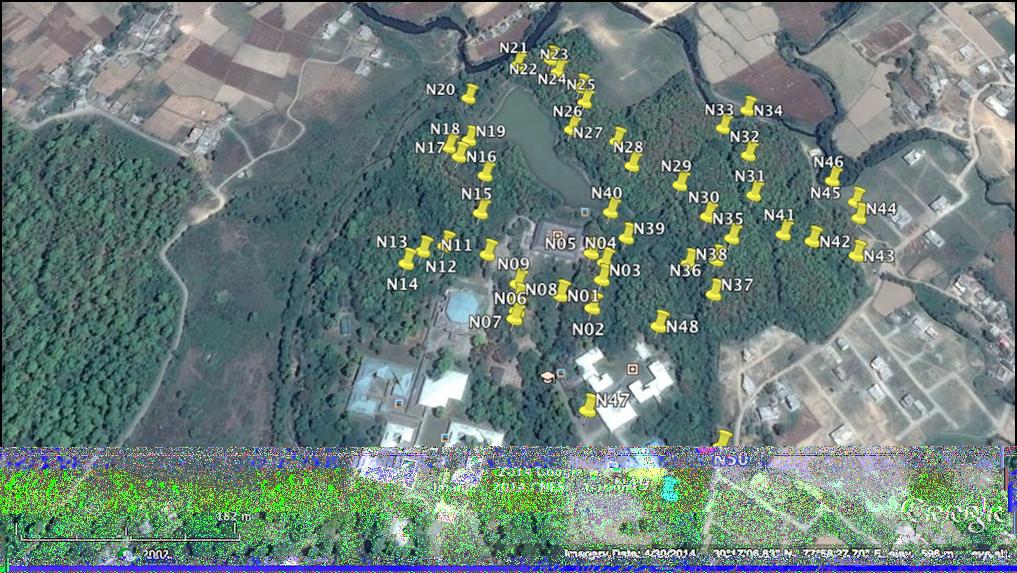Latest Events / News
-
Special Certificate Course in Wildlife Management
3-month Special Certificate Course in Wildlife Management commenced on 1st September 2014. A request from the Bangladesh Forest Department was received by the Wildlife Institute of India for conducting a 3-month certificate course. 16 officers of the rank of Wildlife and Biodiversity Conservation Officer and equivalent were nominated for the course under the project “Strengthening Regional Cooperation for Wildlife Protection” by the Government of Bangladesh. The course has been tailored in order to meet the requirements of the participants. The participants would be undergoing 10 modules in the form of class room lectures, hands on and field exercises. The participants would be staying in WII till 15th October 2014 and would be travelling to the various protected areas in the country for Wetland, Techniques and Management Tour. The course will conclude in Kolkata on 1st December 2014.




Md. Kamruzzaman Md. Manirul Islam Allama Shibli Sadik Md. Azizar Rahaman 
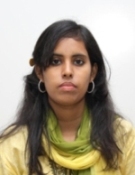
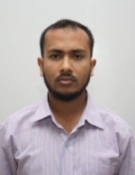

Hatem Sazzat Md. Zulkar Nine Israt Jahan Md. Mofizur Rahaman Chowdhury Md. Monirul Islam 



Md. Monzurul Alam Pinkee Kumar Dhar Raju Ahmed Md. Rashedul Kabir Bhuiyan 


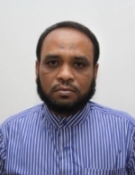
Salma Akter Md. Sharifuzzaman Md. Tarik Kabir Zahirul Kabir Shaheen
Last Updated: April 14, 2015 -
Foundation Stone Laying Ceremony of the UNESCO’s Training Centre for Asia and the Pacific Region at WII
 The foundation stone of the United Nations Educational, Scientific and Cultural Organization (UNESCO) Category 2 Centre on World Natural Heritage Management and Training for Asia and the Pacific Region was laid at Wildlife Institute of Indiaon 30 August 2014 by Shri. Prakash Javadekar, the Hon’ble Minister of Environment, Forests and Climate Change (Independent Charge), Government of India.The Centre’s mission is to strengthen implementation of World Heritage Convention in Asia and the Pacific Region by building the capacity of all those professionals and bodies involved with World Natural Heritage Site Inscription, Protection, Conservation and Management in Asia and the Pacific Region, through training, research, dissemination of information and network building. The Centre will (a) conduct short-and long-term capacity-building activities, including workshops, courses and international conferences; (b) undertake research on identified priority areas related to Natural World Heritage protection and management, with particular focus on models of community participation; (c) develop and maintain a documentation Centre accessible to the public on Natural World Heritage issues relevant to the region, (d) implement programmes for the exchange of experts with other regional resource Centres and (e) facilitate the development of a World Heritage site managers' regional network and coordinate its activities with the States Parties to the UNESCO World Heritage Convention and the network of existing Category 2 Centres related to World Heritage. While UNESCO has established such Centres in eight other countries viz. China, Norway, South Africa, Bahrain, Mexico, Italy, Brazil and Spain on Culture Heritage, the Centre at WII is the world’s first Centre dealing with Natural World Heritage.
The foundation stone of the United Nations Educational, Scientific and Cultural Organization (UNESCO) Category 2 Centre on World Natural Heritage Management and Training for Asia and the Pacific Region was laid at Wildlife Institute of Indiaon 30 August 2014 by Shri. Prakash Javadekar, the Hon’ble Minister of Environment, Forests and Climate Change (Independent Charge), Government of India.The Centre’s mission is to strengthen implementation of World Heritage Convention in Asia and the Pacific Region by building the capacity of all those professionals and bodies involved with World Natural Heritage Site Inscription, Protection, Conservation and Management in Asia and the Pacific Region, through training, research, dissemination of information and network building. The Centre will (a) conduct short-and long-term capacity-building activities, including workshops, courses and international conferences; (b) undertake research on identified priority areas related to Natural World Heritage protection and management, with particular focus on models of community participation; (c) develop and maintain a documentation Centre accessible to the public on Natural World Heritage issues relevant to the region, (d) implement programmes for the exchange of experts with other regional resource Centres and (e) facilitate the development of a World Heritage site managers' regional network and coordinate its activities with the States Parties to the UNESCO World Heritage Convention and the network of existing Category 2 Centres related to World Heritage. While UNESCO has established such Centres in eight other countries viz. China, Norway, South Africa, Bahrain, Mexico, Italy, Brazil and Spain on Culture Heritage, the Centre at WII is the world’s first Centre dealing with Natural World Heritage. In the event organized to commemorate the foundation stone laying of UNESCO Centre at WII, Dr. V.B. Mathur, Director of WII provided an overview of the Centre and highlighted that this Centre marks the global recognition of WII’s strength to contribute to national as well as international efforts to preserve Natural Heritage. The Hon’ble Union Minister Shri. Prakash Javadekar, in his address to large gathering of professionals and staff (http://youtu.be/2bjOuKbzydI), credited the efforts of WII including the establishment of UNESCO Centre and various applied research projects providing space for integrated development and conservation planning. He elaborated on his keen interest and appreciation of nature and reiterated his commitment for safeguarding the natural wealth of the country. He welcomed the role played by WII in providing technical advices to the Ministry of Environment, Forests and Climate Change and pledged support for overall welfare of the organization and nation building.
The foundation stone laying and subsequent commemorate events were attended by various dignitaries including Dr. S.S. Garbyal, Director General of Forests & Special Secretary to Govt. of India, Shri. A.K. Srivastava, Additional Director General of Forests, MoEFCC, Chief Executives and senior officials of sister Organizations in Dehradun and WII family members consisting of faculty members, staff, research fellows and students. During the event, the Hon’ble Minister released an ENVIS Bulletin on ‘Coastal and Marine Protected Areas in India: Challenges and Way Forward’, edited by Dr. K. Sivakumar, Scientist-E of WII. As a token of appreciation and gratitude, the Hon’ble Minister was also presented with newly created line drawing of the Institute’s campus by Director WII, Dr. V.B. Mathur and a framed photograph of a rare plant, Brahma Kamal (Saussurea obvallata), found in the high altitutes of the Himalaya, by Dr. B.S. Adhikari, Scientist-E of WII.In the end, Dr. P.K. Mathur, Dean of WII, summarized the entire process and duly acknowledged the Hon’ble Minister and all others who participated in the event













Last Updated: September 2, 2014 -
Release of ENVIS Bulletin ‘Coastal and Marine Protected Areas in India: Challenges and Way Forward’
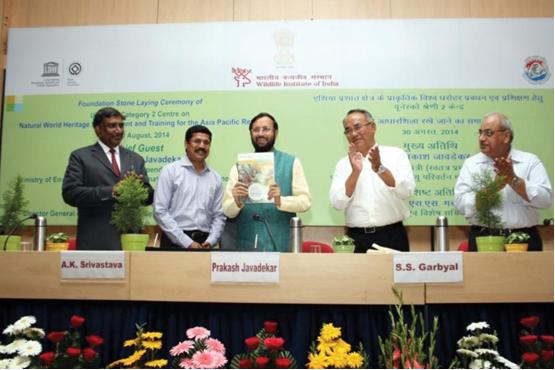
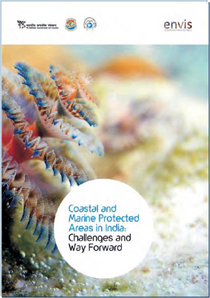
ENVIS Bulletin release by the
Hon’ble Minister Shri Prakash Javadekar,
Minister of State (Independent Charge), Ministry of Environment, Forests and Climate Change, Government of IndiaENVIS Bulletin on
‘Coastal and Marine Protected Areas in India: Challenges and Way Forward’Wildlife Institute of India has published the ENVIS Bulletin ‘Coastal and Marine Protected Areas in India: Challenges and Way Forward’, which was released by the Hon’ble Minister Shri Prakash Javadekar, Minister of State (Independent Charge), Ministry of Environment, Forests and Climate Change, Government of India in presence of Dr. S.S. Garbyal, Director General of Forests & Special Secretary to Government of India in Wildlife Institute of India, Dehradun on 30 August, 2014.
Last Updated: September 1, 2014 -
Laying of Foundation Stone of UNESCO Centre on 'Natural World Heritage Management and Training for the Asia Pacific Region
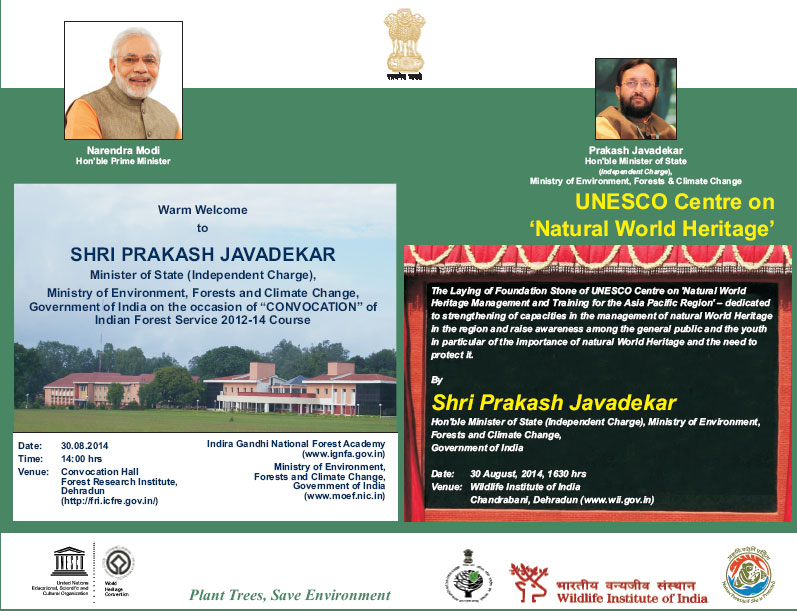
Last Updated: August 30, 2014 -
Release of Publications during Annual Research Seminar, 21st August, 2014
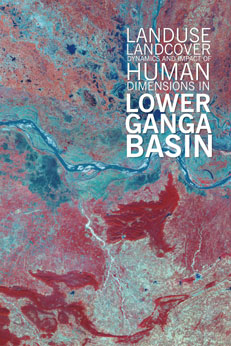
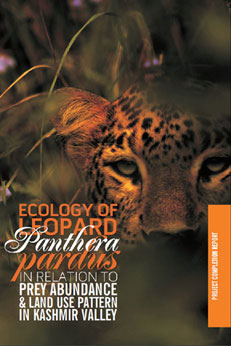

Preface & Table of Contents
 (8.5 mb)
(8.5 mb)Executive Summary

(3.15 mb)Executive Summary

(798 kb)
Last Updated: August 21, 2014 -
68th Independence Day Celebrated at WII
 The 68th Independence Day was celebrated at the Wildlife Institute of India with the unfurling of the national flag by Dr. V.B. Mathur, Director, Wildlife Institute of India in the Institute’s foyer. Addressing the gathering of Institute’s faculty, staff, researchers and students Dr. Mathur recalled the supreme sacrifices made by millions of Indians during the freedom struggle leading to Indian independence on 15th August, 1947. He emphasized on the need to dedicate in the task of both nation and institution building. He enumerated some of the recent changes introduced in the Institute’s functioning and urged everyone to contribute towards achieving excellence in all institutional activities.
The 68th Independence Day was celebrated at the Wildlife Institute of India with the unfurling of the national flag by Dr. V.B. Mathur, Director, Wildlife Institute of India in the Institute’s foyer. Addressing the gathering of Institute’s faculty, staff, researchers and students Dr. Mathur recalled the supreme sacrifices made by millions of Indians during the freedom struggle leading to Indian independence on 15th August, 1947. He emphasized on the need to dedicate in the task of both nation and institution building. He enumerated some of the recent changes introduced in the Institute’s functioning and urged everyone to contribute towards achieving excellence in all institutional activities. On this occasion awards were given to 5 employees of the Institute viz. Shri Pyar Chand Aswal, Shri Vijay Prasad, Shri N.K. Chettri, Shri Suresh Kumar and Smt. Sadhna Verma for maximum use of words in Hindi language in their official work.





A tree planting programme followed the flag hoisting in which children of Institute’s faculty and staff planted saplings of flowering trees/shrubs.



Last Updated: August 19, 2014 -
Campus Biodiversity
Elevational species replacement,
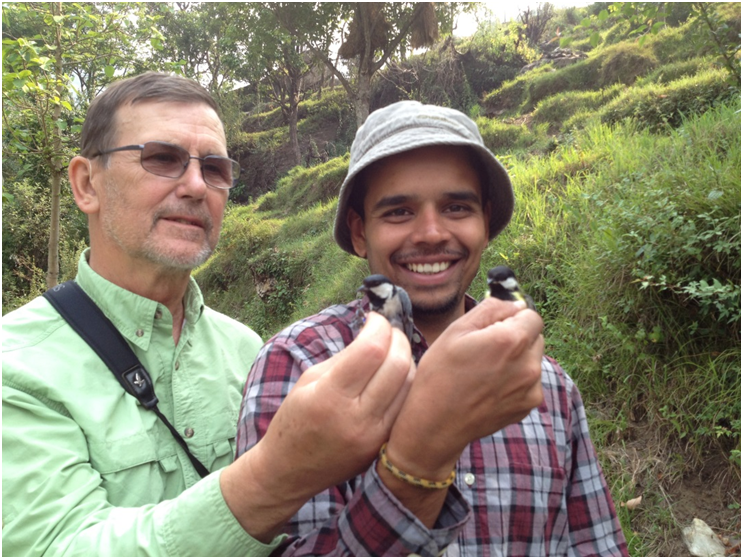 the replacement of closely related species along an elevational gradient, is one of the most widely documented but least understood ecological patterns. Our current understanding is mostly based on attempting to explain patterns across communities. The objective of the research that Sahas Barve (M.Sc. WII; Ph.D. student Cornell University) and I are undertaking is to identify the mechanisms that create this pattern. We combine year-round studies of populations with experiments to test the importance of interspecific competition, predation and blood physiology in limiting species distributions of a group of closely related resident cavity-nesting species belonging to the family of the titmice (Paridae).The campus of the Wildlife Institute of India is one of the study sites where we can study a low-elevation great tit population in the absence of other tit species. We placed 50 nest boxes on campus and use these to study great tit reproduction. In April 2014 we colour banded all males and most females and were able to determine the use of the campus and its nest boxes. Most of the pairs identified, use a nest box for breeding.
the replacement of closely related species along an elevational gradient, is one of the most widely documented but least understood ecological patterns. Our current understanding is mostly based on attempting to explain patterns across communities. The objective of the research that Sahas Barve (M.Sc. WII; Ph.D. student Cornell University) and I are undertaking is to identify the mechanisms that create this pattern. We combine year-round studies of populations with experiments to test the importance of interspecific competition, predation and blood physiology in limiting species distributions of a group of closely related resident cavity-nesting species belonging to the family of the titmice (Paridae).The campus of the Wildlife Institute of India is one of the study sites where we can study a low-elevation great tit population in the absence of other tit species. We placed 50 nest boxes on campus and use these to study great tit reproduction. In April 2014 we colour banded all males and most females and were able to determine the use of the campus and its nest boxes. Most of the pairs identified, use a nest box for breeding. Through checking the nest boxes regularly, we acquire exact dates for each step in the reproductive cycle like nest building, initiation of egg-laying, incubation period, fledging period for each pair. This not only adds data to our research but also proves important in understanding other significant aspects of great tit breeding phenology.Unlike temperate
 regions, in tropical and sub-tropical habitats, the initiation of breeding in birds is not strongly governed by the temperature but rather by the availability of food. For most passerine birds this means small insects to feed young hatchlings. Although this is speculation, but based on our observations, we feel that great tits in Dehradun synchronize breeding with the flowering of Sal (Shorea robusta) trees. Sal trees mast every year at the beginning of summer (in turn governed by the length of winter), being the dominant tree species in the forest, their flowers and seeds probably induce an arthropod explosion. Birds like great tits probably track this phenomenon closely and time their breeding in tandem with the Sal flowering and leafing cycles. In the coming years, long-term nest box studies on WII campus will shed light on how resilient breeding phenology of common birds like great tits areto the annual fluctuations in climate leading to changes in Sal flowering phenology.
regions, in tropical and sub-tropical habitats, the initiation of breeding in birds is not strongly governed by the temperature but rather by the availability of food. For most passerine birds this means small insects to feed young hatchlings. Although this is speculation, but based on our observations, we feel that great tits in Dehradun synchronize breeding with the flowering of Sal (Shorea robusta) trees. Sal trees mast every year at the beginning of summer (in turn governed by the length of winter), being the dominant tree species in the forest, their flowers and seeds probably induce an arthropod explosion. Birds like great tits probably track this phenomenon closely and time their breeding in tandem with the Sal flowering and leafing cycles. In the coming years, long-term nest box studies on WII campus will shed light on how resilient breeding phenology of common birds like great tits areto the annual fluctuations in climate leading to changes in Sal flowering phenology. The results obtained in Dehradun can be used to compare morphology, physiology and reproduction with those of grea
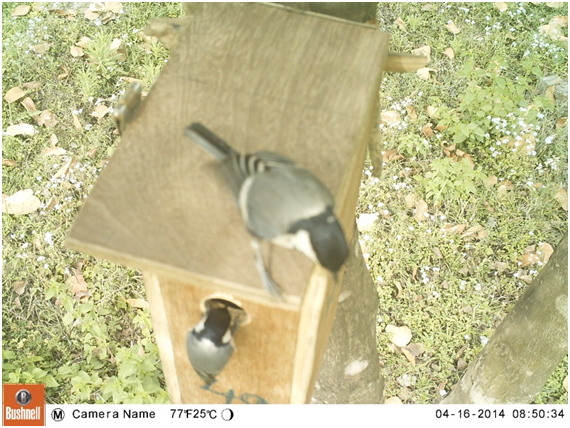 t tit at high elevation, and with those of other species (especially the green-backed tit) in plots at different elevations in the western Himalayas.
t tit at high elevation, and with those of other species (especially the green-backed tit) in plots at different elevations in the western Himalayas. Legend to figures:
Top: André Dhondt (holding great tit) and Sahas Barve (holding green-backed tit), two closely related species that replace each other along the Himalayas.Middle: complete clutch of a great tit in a nestbox on the campus of the WII
Bottom: a great tit pair exploring nestbox # 49. The pair used the box for breeding.
Map of nest-box locations on the WII campus.
Last Updated: July 14, 2014 -
Wildlife Institute of India and University of British Columbia sign Memorandum of Understanding
In a significant step to boost academic, research and training activities involving international partnership, Wildlife Institute of India (WII), Dehradun and University of British Columbia (UBC), Canada have entered into a Memorandum of Understanding (MoU), marking beginning of a formal collaboration between these two premier institutions of learning of international repute. Dr.V
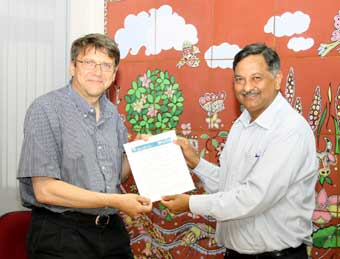 .B. Mathur, Director WII and Dr. John Innes, Dean UBC signed this broad based MoU which will facilitate collaborative courses, projects, workshops/seminars and academic exchange visits of faculty members, researchers and students. After signing the MoU, Dr. V.B. Mathur said “WII has always valued collaborative engagement and partnerships with reputed institutions and in this specific case, in addition to working jointly on various activities of mutual interest and expertise, WII would aim to utilize the expertise of UBC for establishing a state-of-the-art Visualization Laboratory as a priority and and also initiate joint activities looking into aspects of ecosystem services and life cycle assessment of India’s key landscapes”. The MoU, which has been duly approved by concerned ministries of Government India, is initially for five years, with scope for further extension as required. Speaking on the occasion, Dr. Jorma Neuvonen, Director-Special Projects, UBC re-iterated the collective interest of UBC faculties in initiating collaborative activities with WII in identified thematic areas including climate change. Dr. P.K. Mathur, Dean WII, shared the details of MoU with the faculty members present on this occasion and suggested mechanism for initiating joint activities. Dr. K. Ramesh, Scientist, who is coordinating the collaboration, proposed a Vote of Thanks to the visiting two-member delegation from UBC and all those instrumental in making the collaboration possible.
.B. Mathur, Director WII and Dr. John Innes, Dean UBC signed this broad based MoU which will facilitate collaborative courses, projects, workshops/seminars and academic exchange visits of faculty members, researchers and students. After signing the MoU, Dr. V.B. Mathur said “WII has always valued collaborative engagement and partnerships with reputed institutions and in this specific case, in addition to working jointly on various activities of mutual interest and expertise, WII would aim to utilize the expertise of UBC for establishing a state-of-the-art Visualization Laboratory as a priority and and also initiate joint activities looking into aspects of ecosystem services and life cycle assessment of India’s key landscapes”. The MoU, which has been duly approved by concerned ministries of Government India, is initially for five years, with scope for further extension as required. Speaking on the occasion, Dr. Jorma Neuvonen, Director-Special Projects, UBC re-iterated the collective interest of UBC faculties in initiating collaborative activities with WII in identified thematic areas including climate change. Dr. P.K. Mathur, Dean WII, shared the details of MoU with the faculty members present on this occasion and suggested mechanism for initiating joint activities. Dr. K. Ramesh, Scientist, who is coordinating the collaboration, proposed a Vote of Thanks to the visiting two-member delegation from UBC and all those instrumental in making the collaboration possible. 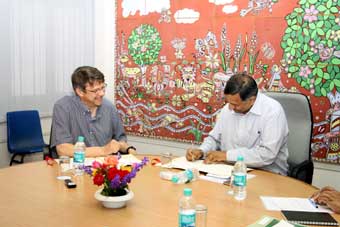



Last Updated: April 25, 2014 -
Appointment of Dr. V.B. Mathur as Director, WII
 Dr. V.B. Mathur has been appointed as the Director of Wildlife Institute of India. He took over the position from Shri R.K. Goel, Director, Indira Gandhi National Forest Academy, Dehradun on 18 February, 2014. Speaking during the special event organized by the Institute’s faculty, staff, researchers and students he said that his endeavour would be to make WII an institution which is liked and coveted by researchers, students and academics as an institution to conduct research and acquire knowledge and skills; sought after by policy makers and administrators as an institution to seek advice and build capacity; and an institution that is respected by national and international peers, as a world class institution not only in the field of wildlife conservation but also in natural resource conservation. He said that in order to achieve the above vision, the priorities would be to enhance institutional infrastructure and research environment so as not only to retain talent but also to attract talent from outside and to build a high performance work environment that generates both enthusiasm and nurture’s talent.
Dr. V.B. Mathur has been appointed as the Director of Wildlife Institute of India. He took over the position from Shri R.K. Goel, Director, Indira Gandhi National Forest Academy, Dehradun on 18 February, 2014. Speaking during the special event organized by the Institute’s faculty, staff, researchers and students he said that his endeavour would be to make WII an institution which is liked and coveted by researchers, students and academics as an institution to conduct research and acquire knowledge and skills; sought after by policy makers and administrators as an institution to seek advice and build capacity; and an institution that is respected by national and international peers, as a world class institution not only in the field of wildlife conservation but also in natural resource conservation. He said that in order to achieve the above vision, the priorities would be to enhance institutional infrastructure and research environment so as not only to retain talent but also to attract talent from outside and to build a high performance work environment that generates both enthusiasm and nurture’s talent. 

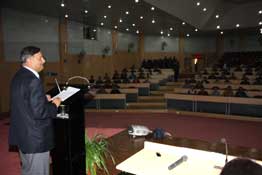

Last Updated: March 9, 2014 -
E-Newsletter
Last Updated: November 29, 2013

